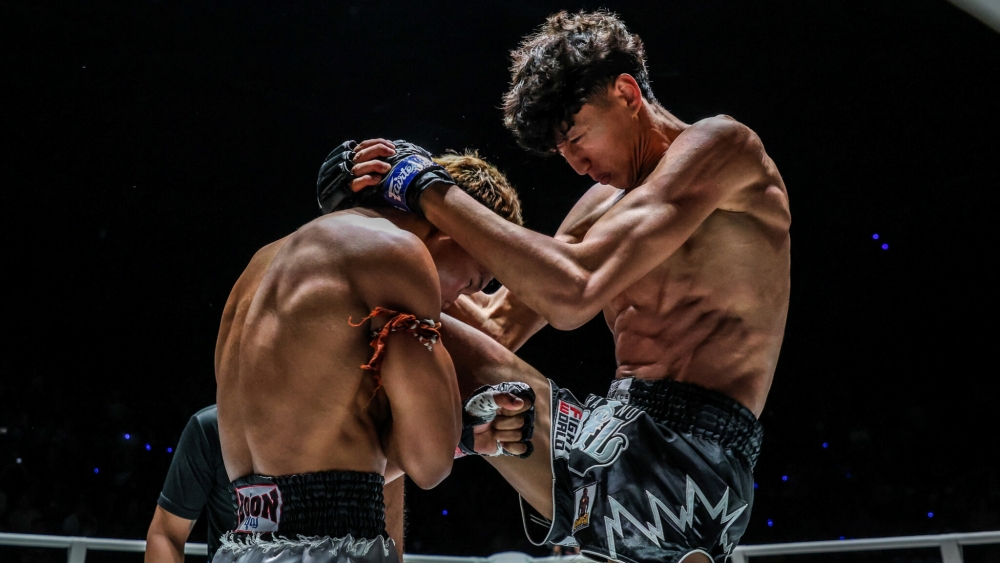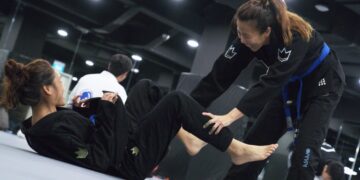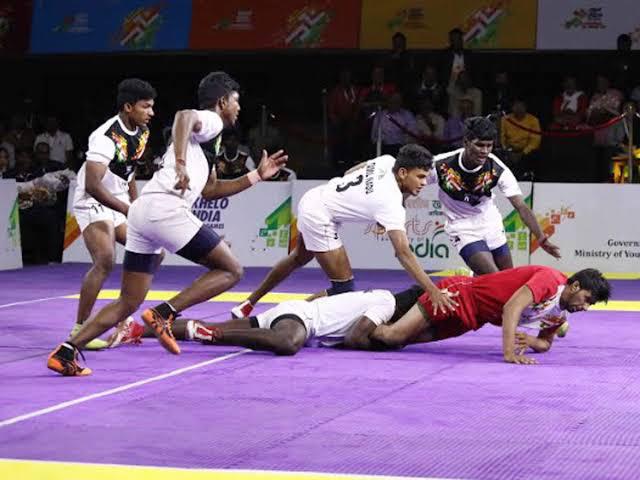
Summary
In Muay Thai, knees are used from close to mid range and are one of Muay Thai’s most devastating weapons. They can stop an opponent’s forward pressure, drain their stamina, or end a fight altogether.
Fighters often use them in the clinch, during exchanges, or as defensive counters because they’re not only effective, but they help score points with the judges because of their impact and control.
To throw an effective knee, your power must come from the ground up. It’s not just a leg lift, it’s a coordinated motion that involves balance, hips, and momentum. The sharper your mechanics, the faster and stronger your knees will be.
This guide explains how to improve your knee technique, strengthen your movement, and build the precision needed to land them effectively in both training and competition.
1) Train Your Core
Powerful knees begin with a strong core. Your core connects your hips and upper body, allowing you to generate force efficiently and stay balanced when striking. A stable core not only improves power but also helps with posture, control, and recovery after each strike.
Try some exercises in the video above along with some others here to develop a strong core:
- Plank Variations: Build stability and endurance in your core.
- Hanging Knee Raises: Strengthen your hip flexors and abdominals, both crucial for driving knees upward.
- Medicine Ball Twists: Improve rotational power and coordination between your upper and lower body.
- Standing Knee Drives: Practice controlled, repetitive knee strikes to develop rhythm, accuracy, and explosiveness.
2) Balance And Posture
Good balance ensures you don’t lose position after throwing a knee. Many beginners lean too far forward, which slows recovery. Watch the video above as ONE Featherweight Kickboxing World Champion Superbon demonstrates how to throw a proper knee and shares useful tips on posture and control.
Key points:
- Stand tall with your shoulders aligned over your hips.
- Keep your weight centered on your supporting leg.
- Return to your stance quickly after each strike.
Balanced knees let you attack repeatedly without giving up control or stability.
3) Master The Clinch
Most knees in Muay Thai come from the clinch. Controlling your opponent’s head, posture, and arms allows you to create space for clean strikes.
Tips:
- Use inside hand control to secure your opponent’s neck or arms.
- Pull them slightly downward as you drive your knee upward.
- Mix body and head-level knees to break rhythm.
- Maintain constant pressure and control inside the clinch.
The goal is not just to land a single knee but to chain them together while maintaining dominance.
4) Develop Hip Flexibility And Strength
Flexible hips allow greater range of motion and faster recovery. Strong hip muscles also help you generate power without losing balance.
Training ideas:
- Add dynamic stretches such as leg swings and hip circles before training.
- Incorporate resistance band knee lifts to strengthen hip flexors.
- Use heavy-bag knee drills to reinforce range and power.
A flexible, strong hip rotation will make your knees sharper and more explosive.
5) Heavy Bag Knee Drills
Heavy-bag work is one of the best ways to build speed and power safely. If you’re new, here are some steps on how to get started:
- Stand close to the bag and drive your knee through its center.
- Alternate between single knees and rapid-fire sets of five or six.
- Focus on snapping the hip forward rather than just lifting your leg.
- Mix in switch knees to train both sides equally.
Repetition develops both timing and endurance, the key to consistent performance in a fight. Once you’re more comfortable with throwing knees on the bag, try some of the drills in the video above.
6) Shadowboxing Drills For Rhythm
Shadowboxing lets you practice technique without resistance. It helps refine form and timing.
Visualize an opponent in front of you. Step in, lift your knee sharply, and rotate your hips as you strike. Stay relaxed between each movement. Add arm frames and clinch motions to make it realistic.
This builds muscle memory so that when you enter real exchanges, your movement feels automatic.
7) Combining Knees Into Combinations
Knees are most effective when linked with other strikes. Combining them with punches, elbows, or teeps makes them harder to read.
Examples:
- Jab, Cross, Step-In Knee
- Teep, Cross, Lead Knee
- Clinch, Elbow, Knee
Practicing sequences builds flow between offense and close-range power.
8) Strengthen Your Leg Muscles
The leg that stays grounded does most of the work during knee strikes. A weak base limits balance and power.
Include exercises like single-leg squats, lunges, and calf raises to improve stability. Strong legs allow you to drive harder and stay mobile in clinch exchanges.
FAQs On Throwing Faster And Stronger Knees
Q: Which Muscles Generate Power In A Muay Thai Knee?
A: Your core, hips, and glutes create most of the force, supported by the driving leg and posture control.
Q: How Do I Make My Knees Faster?
A: Focus on technique before force. Short, explosive drills and strong hip rotation help increase speed.
Q: How Do I Avoid Losing Balance After Throwing A Knee?
A: Keep your shoulders upright and engage your core. Land lightly and return to stance immediately.
Q: Should I Aim For The Body Or Head?
A: Both. Body knees drain stamina while head-level knees can finish a fight when timed correctly.
Final Thoughts
Throwing fast and powerful knees in Muay Thai takes practice, rhythm, and coordination. Power doesn’t come from muscle alone, it comes from how smoothly you move.
By training your hips, balance, and timing, you can turn every knee into a precise and controlled strike. Whether you’re working the bag, clinching with a partner, or sparring, each repetition builds the foundation for stronger, faster, and more confident knees.
You may also like:
Mastering The Clinch Sweep For Muay Thai
Summary In Muay Thai, elbows are called sok, and they are both versatile and devastating. They can be thrown from multiple angles, upward, downward, horizontal, and even spinning, making them a key tool in clinch…
Summary Training bags have been a cornerstone of striking for decades. They allow athletes to practice timing, precision, and combinations without needing a live partner. In both Boxing and Muay Thai, bags are used not…
The teep, also known as the push kick, is one of the most versatile weapons in Muay Thai. It’s often called the “jab of the legs” because of how effectively it controls distance, disrupts rhythm,…
Summary The clinch is one of the most dominant positions in Muay Thai, and knowing how to sweep from it can completely change the flow of a fight. A clinch sweep allows you to off-balance…
Summary In Muay Thai, every strike has an answer. For low kicks and body kicks, the answer is the check. This simple yet crucial move can change the flow of a fight, turning an opponent’s…
Summary Sparring isn’t just for fighters who step into the ring. For hobbyists, it’s one of the best ways to truly understand Muay Thai. It teaches timing, defense, and strategy in a way that pad…
Summary The L step is a movement pattern where you step diagonally backward and to the side, forming a “L” shape movement. It allows you to move off the centerline and create angles while maintaining…
Summary Metabolism refers to all the chemical processes that keep your body functioning. It turns the food you eat into energy for movement, training, repair, and daily living. A faster metabolism burns more energy, while…
Summary There isn’t a single “best” martial art, only the one that suits you best. Whether you want to get fitter, learn self-defense, or explore something new, each discipline offers its own set of benefits….
Summary Singapore’s fitness landscape is evolving faster than ever. From high-intensity race formats to group circuits and skill-based training, more people are asking not just how to get fit but what kind of fit they…
Summary A breakfall, known as ‘ukemi’ in Japanese martial arts, is one of the first techniques students learn in Brazilian Jiu-Jitsu. Instead of resisting a fall, you guide your body toward the mat and use…
Summary Diet trends often come and go, but one debate that continues is meal frequency. Some people swear by eating every few hours to “keep metabolism high,” while others prefer two or three bigger meals…




![[WATCH] IND vs SA 2025: Rishabh Pant vents frustration at Kuldeep Yadav for slow over-rate warning](https://lbsports88.com/wp-content/uploads/2025/11/watch-ind-vs-sa-2025-rishabh-pant-vents-frustration-at-kuldeep-yadav-for-slow-over-rate-warning-360x180.jpg)





























